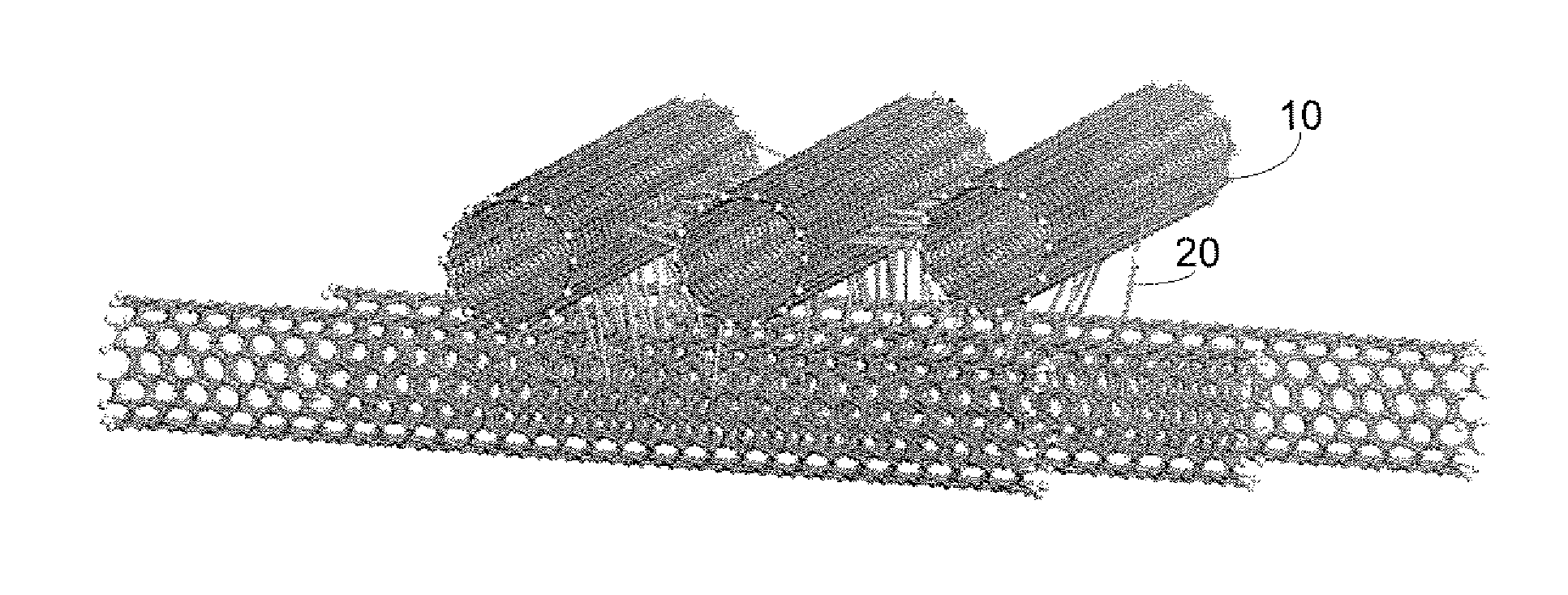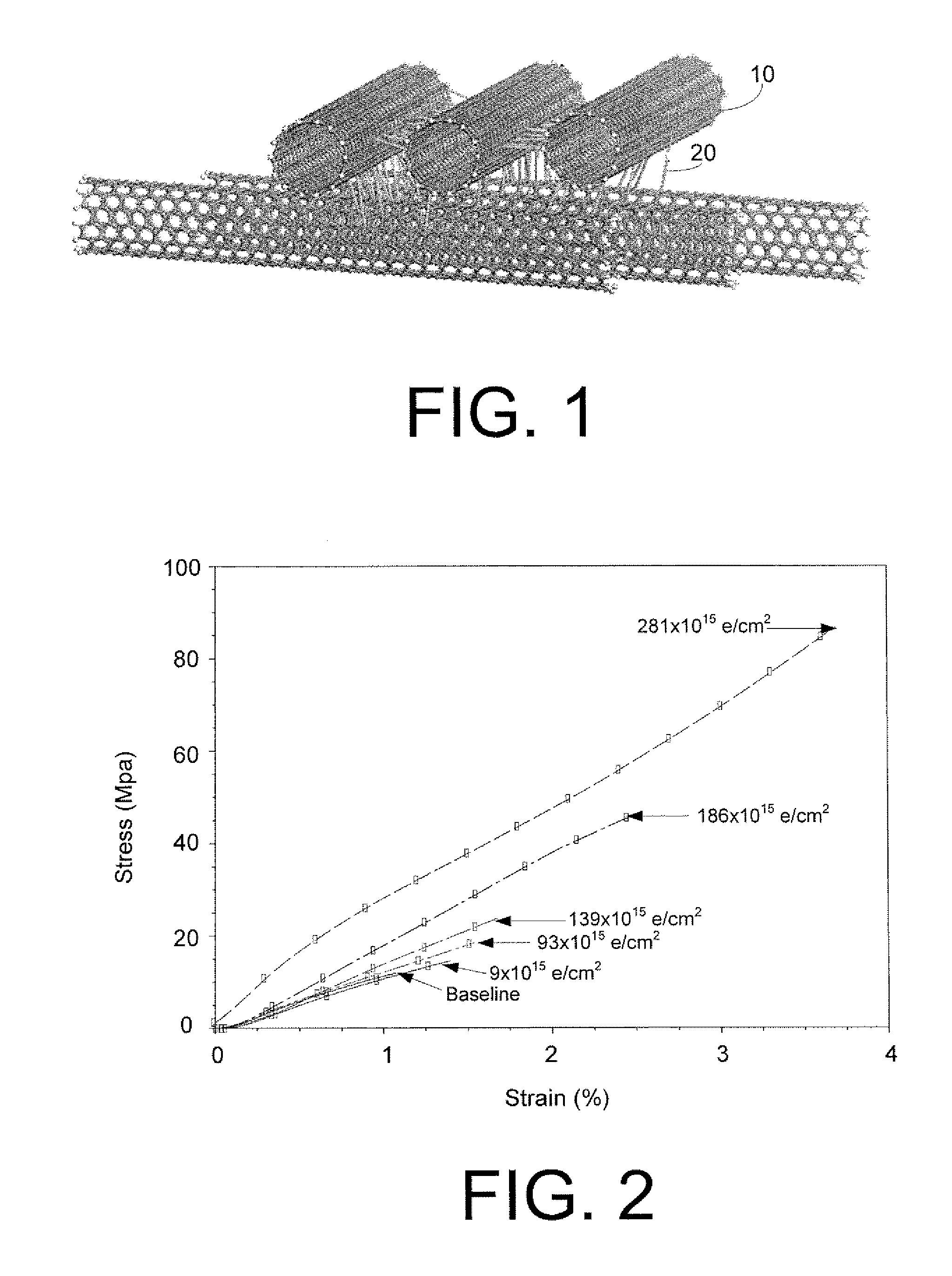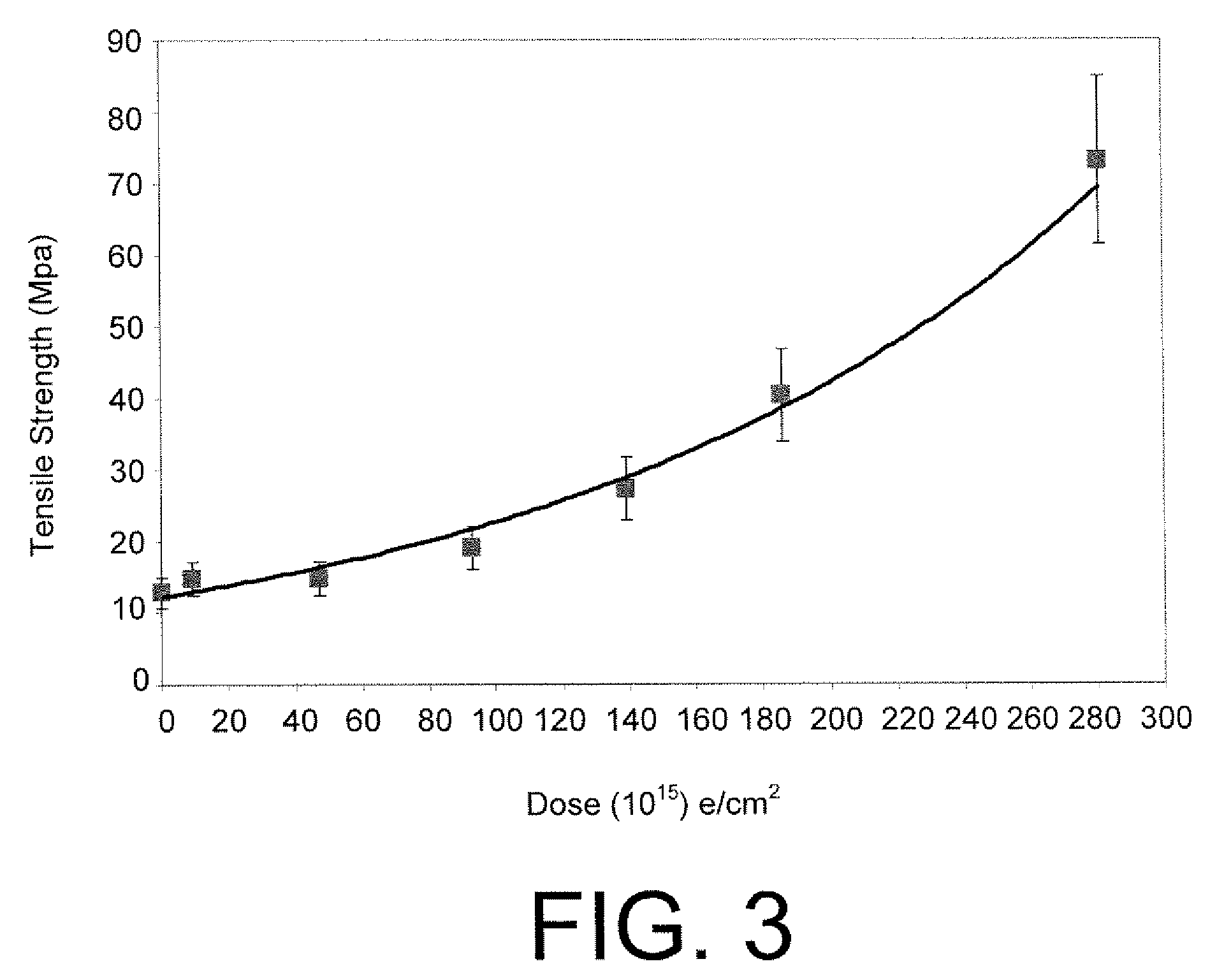Method for Functionalization of Nanoscale Fiber Films
a technology of nanofibers and functional fibers, applied in the field can solve the problems of reducing the electrical and thermal conductivity of nanofiber film materials, and reducing the electrical and thermal conductivity of nanofiber films. , to achieve the effect of increasing the tensile strength and modulus of nanofiber films, increasing the electrical and thermal conductivity of nanofiber films, and increasing the tensile strength and modul
- Summary
- Abstract
- Description
- Claims
- Application Information
AI Technical Summary
Benefits of technology
Problems solved by technology
Method used
Image
Examples
example 1
Electron Beam Irradiation of SWNT Film
[0032]SWNTs were obtained from Carbon Nanotechnologies Inc. (Houston, Tex.), The nanotubes were P-Grade purified SWNTs with an average diameter of about 1 to about 1.2 nm and an average length of about 200 to about 500 nm.
[0033]Nanotube films were prepared from the SWNTs as follows: The SWNTs were dispersed with sonification into distilled water containing Triton X-100 surfactant in order to form a stable suspension. The SWNT concentration in the suspension was 40 mg / L. Next, about 12 to 15 liters of suspension was filtered using a custom-made filter with a 0.45 μm nylon filter membrane from Millipore, Inc. (Billerica, Mass.). The filtration process yielded a SWNT film (i.e., a sheet or membrane). The film was then washed using isopropanol. The length and width dimensions of the SWNT film were about 9 inches by 9 inches.
[0034]The film was cut into 2 inch by 3 inch pieces for the irradiation. E-beam irradiation of the SWNT films was conducted usi...
PUM
| Property | Measurement | Unit |
|---|---|---|
| Thickness | aaaaa | aaaaa |
| Thickness | aaaaa | aaaaa |
| Thickness | aaaaa | aaaaa |
Abstract
Description
Claims
Application Information
 Login to View More
Login to View More - R&D
- Intellectual Property
- Life Sciences
- Materials
- Tech Scout
- Unparalleled Data Quality
- Higher Quality Content
- 60% Fewer Hallucinations
Browse by: Latest US Patents, China's latest patents, Technical Efficacy Thesaurus, Application Domain, Technology Topic, Popular Technical Reports.
© 2025 PatSnap. All rights reserved.Legal|Privacy policy|Modern Slavery Act Transparency Statement|Sitemap|About US| Contact US: help@patsnap.com



